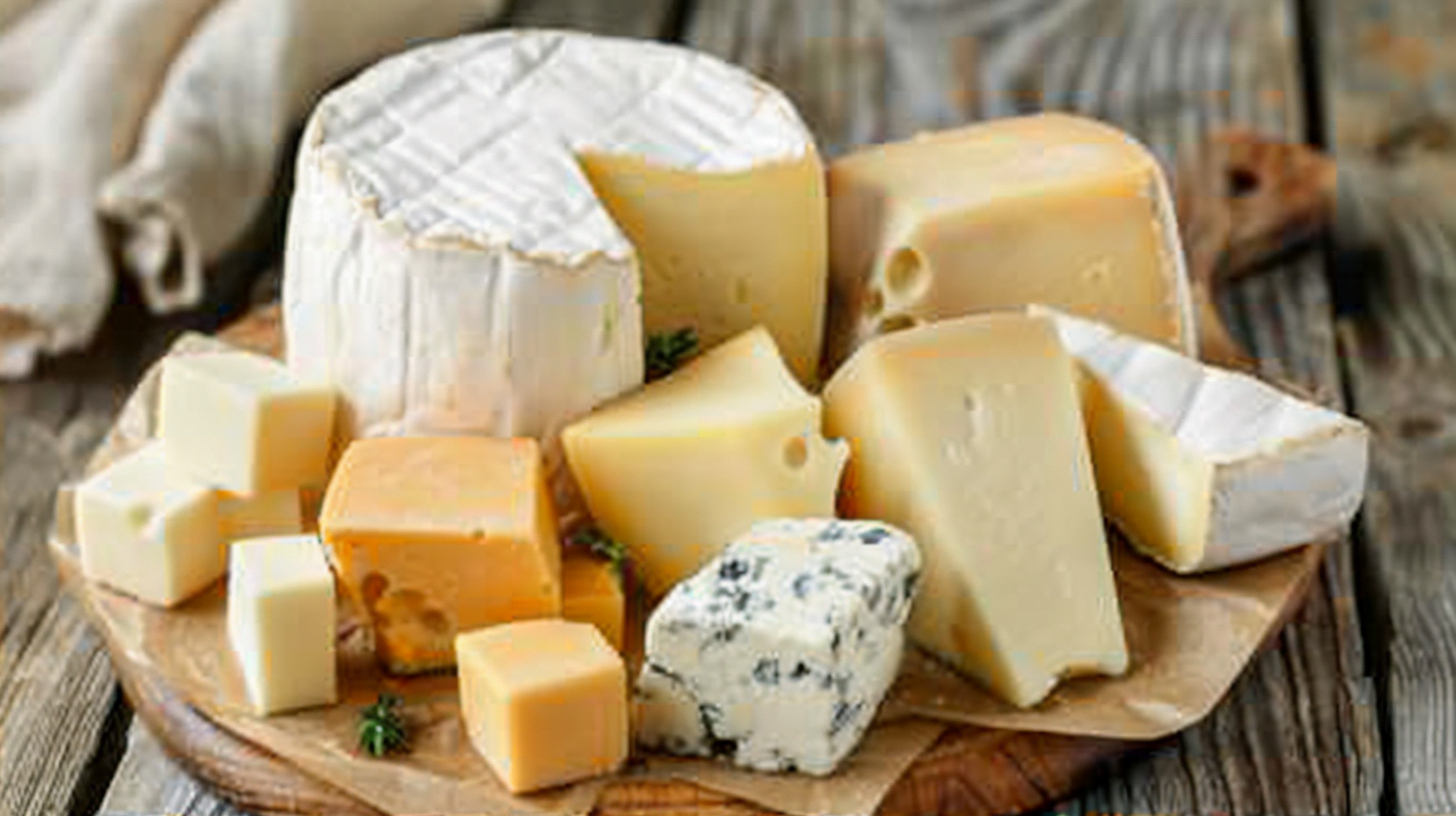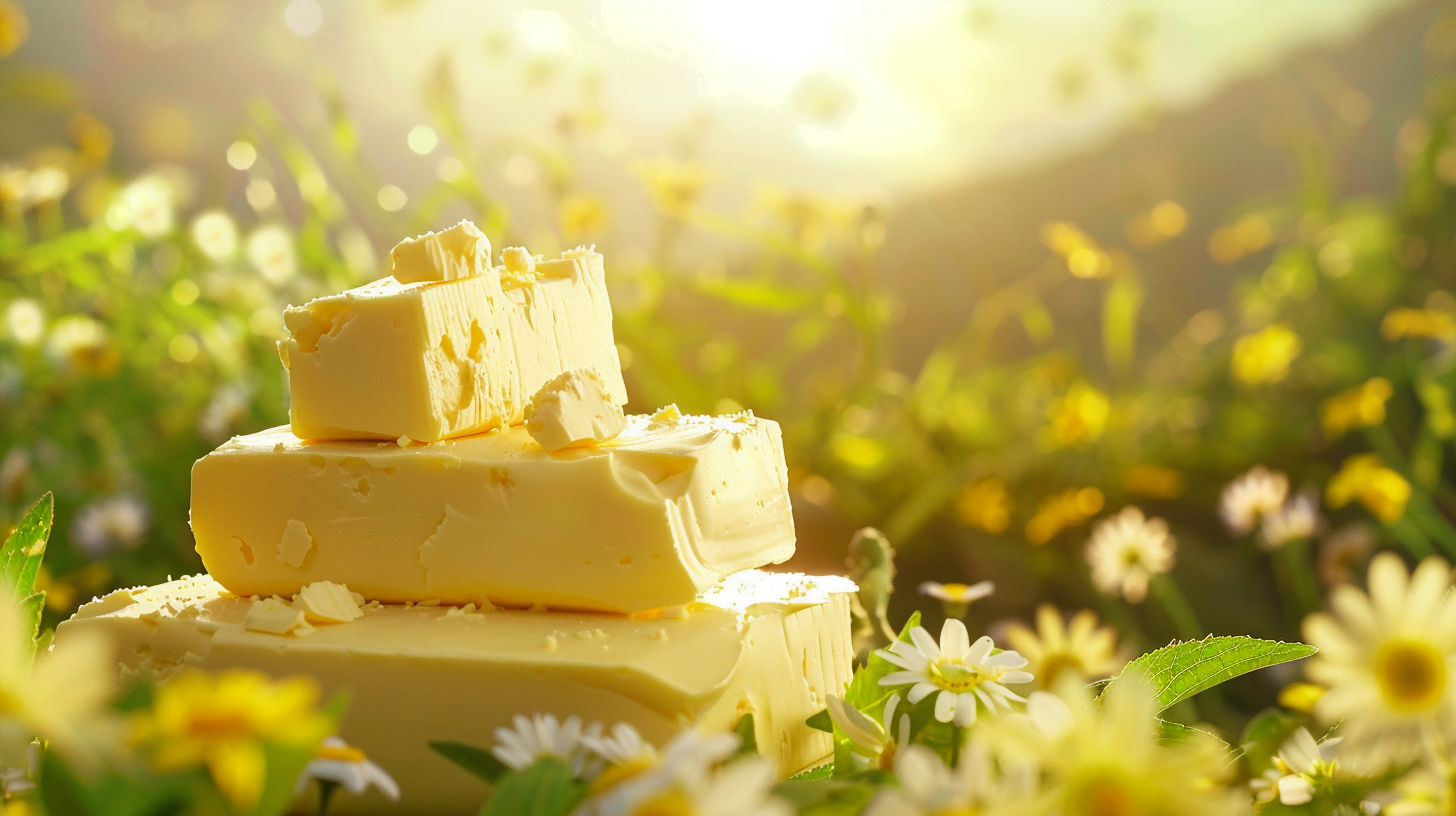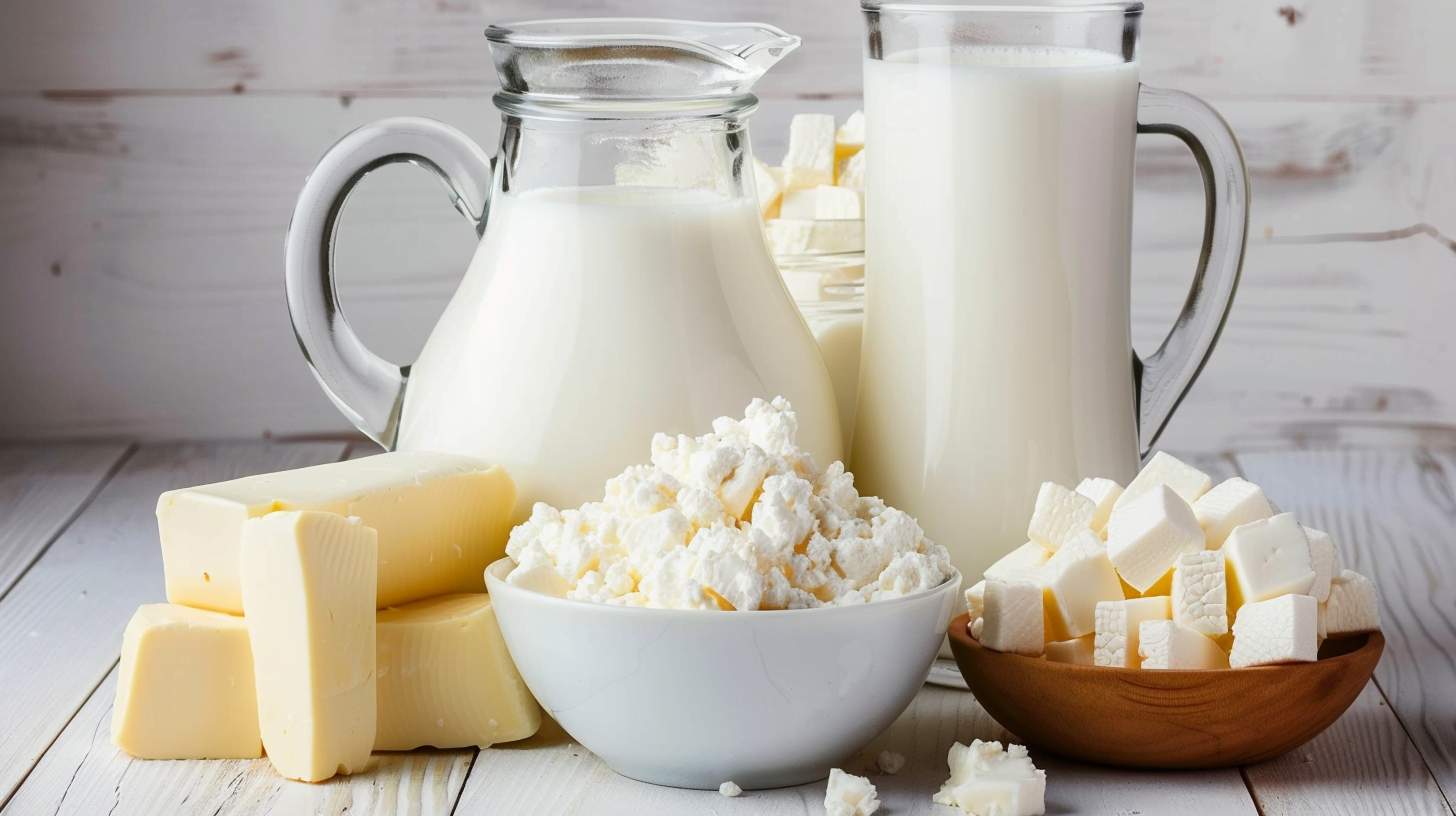Introduction
Imagine a world without cheese – no gooey pizzas, creamy pastas, or tantalizing cheeseboards. Unthinkable, right? Cheese is a beloved dairy product that has captured the hearts (and taste buds) of people worldwide. In this comprehensive guide, we’ll explore the countries that reign supreme in cheese production, uncovering fascinating facts, production methods, and the cultural significance of this dairy delight.
Top Cheese-Producing Nations and Their Specialties
United States
The United States is a true powerhouse when it comes to cheese production. According to the U.S. Department of Agriculture, the country produced a staggering 13.2 billion pounds of cheese in 2021, solidifying its position as the world’s largest cheese producer.
Some of the most popular American cheese varieties include:
- Cheddar: A semi-hard cheese with a distinctive sharp flavor, cheddar is a staple in American households and a key ingredient in countless dishes.
- Mozzarella: Known for its stretchy texture and mild taste, mozzarella is a beloved topping for pizzas and a crucial component in Italian-American cuisine.
- Cream Cheese: Soft and spreadable, cream cheese is a versatile ingredient used in everything from bagels to cheesecakes.
Wisconsin, fondly known as “America’s Dairyland,” is a hub for cheese production, contributing over 3.4 billion pounds annually. The state is renowned for its artisanal cheesemakers and hosts numerous cheese festivals and competitions.
Germany
Germany is another major player in the cheese industry, producing around 2.2 million tons of cheese each year. This European nation is famous for its rich cheese-making traditions and unique varieties.
Some of Germany’s most celebrated cheeses include:
- Emmental: A Swiss-style cheese with distinctive holes, Emmental is a semi-hard cheese with a nutty flavor.
- Butterkäse: Literally translating to “butter cheese,” this semi-soft cheese has a creamy texture and a slightly tangy taste.
- Limburger: Known for its pungent aroma, Limburger is a washed-rind cheese with a strong, earthy flavor.
The art of German cheesemaking is deeply rooted in the country’s history, with many small-scale producers adhering to traditional methods passed down through generations.
France
When it comes to cheese, France is a true connoisseur’s paradise. This country is renowned for its diverse array of cheeses, with production figures reaching around 1.8 million tons annually.
Some of France’s most renowned cheese varieties include:
- Brie: A soft, creamy cheese with a bloomy rind, Brie is a quintessential French cheese often served at the end of a meal.
- Camembert: Similar to Brie, Camembert is a soft, surface-ripened cheese with a rich, buttery flavor.
- Roquefort: A blue cheese made from sheep’s milk, Roquefort is known for its distinctive veins of blue mold and tangy taste.
The terroir, or the unique combination of soil, climate, and farming practices, plays a crucial role in shaping the flavors and characteristics of French cheeses.
Italy
Italy is another cheese-making powerhouse, producing around 1.3 million tons of cheese annually. Cheese is an integral part of Italian cuisine, and the country is home to some of the world’s most iconic varieties.
Some of Italy’s most famous cheeses include:
- Parmigiano-Reggiano: A hard, aged cheese made from unpasteurized cow’s milk, Parmigiano-Reggiano is a staple in Italian cooking and a key ingredient in dishes like pasta and risotto.
- Gorgonzola: A blue-veined cheese made from cow’s milk, Gorgonzola has a creamy texture and a distinctive tangy flavor.
- Mozzarella: While mozzarella is popular worldwide, Italy is the birthplace of this soft, fresh cheese made from buffalo or cow’s milk.
The role of cheese in Italian cuisine cannot be overstated, with many dishes relying on the unique flavors and textures of these beloved dairy products.
Factors Influencing Cheese Production
Several factors contribute to a country’s ability to produce large quantities of cheese:
- Climate and Geography: Certain regions are better suited for dairy farming and cheese production due to their climate, soil conditions, and availability of grazing land for cattle.
- Dairy Farming Practices: The quality and quantity of milk produced by dairy cows directly impact cheese production. Factors like herd management, feeding practices, and animal welfare play a crucial role.
- Traditional Cheesemaking Methods: Many countries have long-standing traditions and techniques for cheesemaking that have been passed down through generations. These methods often contribute to the unique flavors and characteristics of regional cheeses.
- Government Regulations and Quality Control: Strict regulations and quality control measures help ensure the safety and consistency of cheese products, enabling large-scale production while maintaining high standards.
The Cultural Significance of Cheese
Cheese is more than just a food; it is a culinary art form deeply woven into the cultural fabric of many nations. Here are a few examples of the cultural significance of cheese:
- Cheese Festivals and Celebrations: From the annual Cheese Rolling event in Gloucestershire, England, to the Cheese Festival in Alkmaar, Netherlands, cheese is celebrated through vibrant festivals and events worldwide.
- Regional Cuisines and Traditions: Cheese plays a vital role in many regional cuisines, such as the use of Parmesan in Italian dishes, the popularity of fondue in Swiss cuisine, and the prevalence of cheese in French gastronomy.
- Artisanal and Farmstead Cheesemaking: Many countries have a rich tradition of small-scale, artisanal cheesemaking, where cheesemakers use time-honored techniques and locally sourced ingredients to create unique, high-quality cheeses.
Health Benefits and Nutritional Value of Cheese
While cheese is often associated with indulgence, it also offers several health benefits and valuable nutrients:
- Protein: Cheese is an excellent source of high-quality protein, essential for building and repairing tissues in the body.
- Calcium: Many cheeses are rich in calcium, which is crucial for maintaining strong bones and teeth.
- Vitamins and Minerals: Cheese contains various vitamins and minerals, including vitamin B12, zinc, and phosphorus.
However, it’s important to note that cheese is also high in saturated fats and calories, so moderation and portion control are key to incorporating it into a balanced diet.
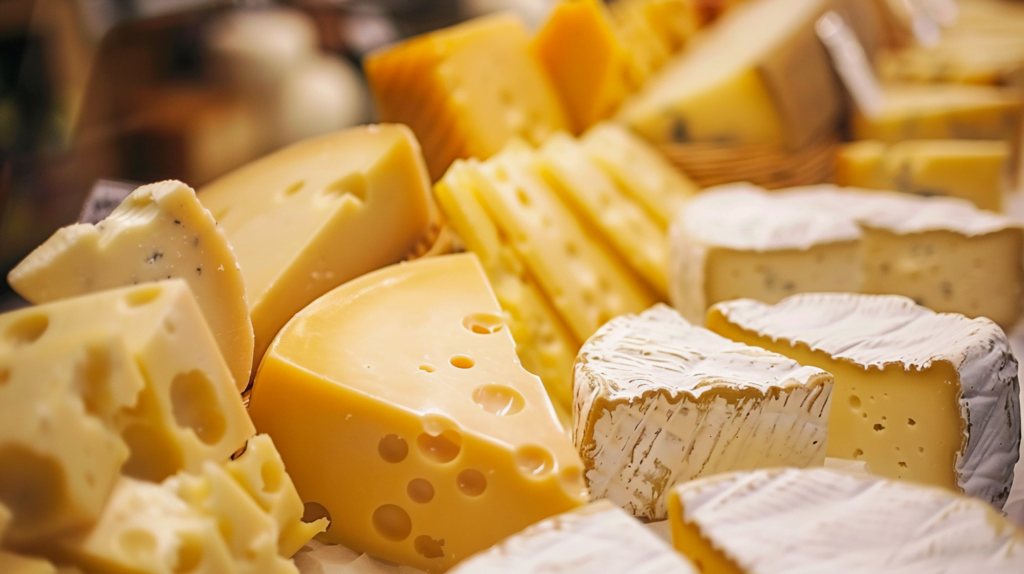
Cheese Trends and Innovations
The cheese industry is constantly evolving, with new trends and innovations emerging regularly:
- Artisanal and Farmstead Cheese Movements: There has been a growing interest in artisanal and farmstead cheeses, which are produced on small farms using traditional methods and locally sourced ingredients.
- Unique and Experimental Cheese Varieties: Cheesemakers are constantly experimenting with new flavors, aging techniques, and ingredients to create unique and innovative cheese varieties.
- Plant-Based and Vegan Cheese Alternatives: With the rise of plant-based diets, there has been an increasing demand for dairy-free cheese alternatives made from ingredients like nuts, soy, and coconut.
Cheese Pairing and Serving Suggestions
Cheese is a versatile ingredient that can be enjoyed in various ways. Here are some popular cheese pairing and serving suggestions:
- Wine and Cheese Pairings: Certain wines and cheeses complement each other beautifully, creating a harmonious flavor experience. For example, bold red wines pair well with aged cheeses like Gouda or Parmesan, while light whites often complement fresh cheeses like Brie or Camembert.
- Cheese Boards and Platters: A well-curated cheese board or platter can be a delightful addition to any gathering. It typically includes a variety of cheeses, accompanied by crackers, nuts, fruits, and other accompaniments.
- Cooking with Cheese: Cheese can elevate many dishes, from classic mac and cheese to gourmet risottos and soups. Here are a few recipe ideas:
- Classic Cheese Fondue
- Baked Brie with Cranberry Compote
- Creamy Cheese Risotto
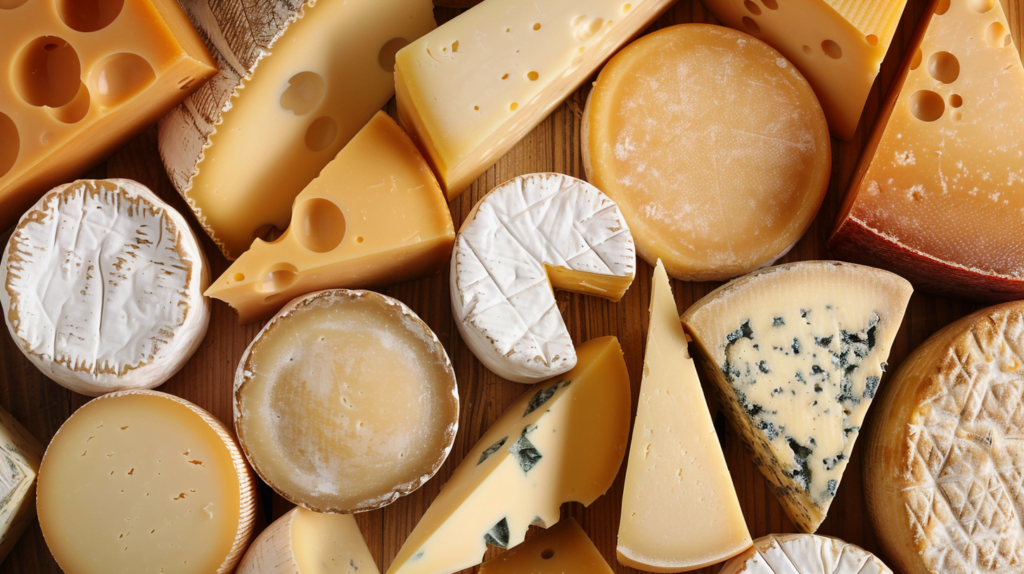
Conclusion
From the rolling hills of Wisconsin to the lush pastures of France, the world’s biggest cheese producers have mastered the art of transforming milk into delectable dairy delights. Whether you’re a die-hard cheese enthusiast or simply appreciate a good slice on your pizza, there’s no denying the global love affair with cheese.
As you explore the diverse cheese offerings from these top-producing nations, remember to savor the unique flavors, textures, and cultural traditions that make each variety special. So, the next time you find yourself in front of a well-stocked cheese counter, embrace the opportunity to embark on a delicious journey around the world, one bite at a time.
